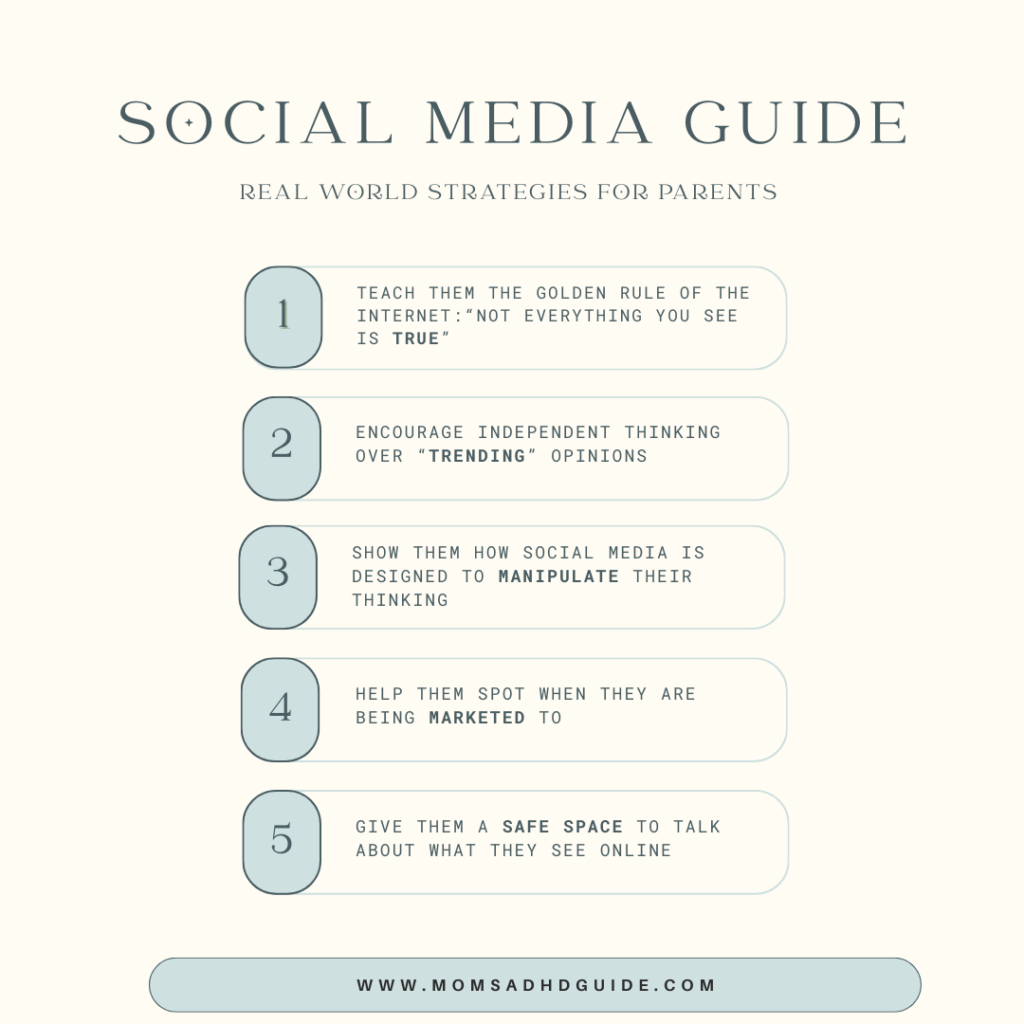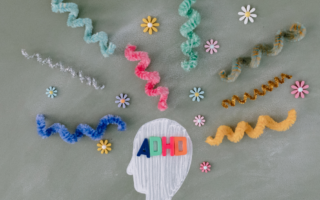Parenting tweens and teens with ADHD in the digital age is no small feat. Our kids are growing up in a world where social media is not just entertainment—it’s a constant stream of information, opinions, trends, and pressures. They scroll through posts telling them how they should think, what they should buy, and even who they should be. My family faces this battle every day.
As a parent, it’s overwhelming to watch. You want them to stay informed, but not overwhelmed. You want them to be independent thinkers, but not influenced by every post, trend, or viral conspiracy theory.
The reality is, not everything they see online is true—and one of the greatest life skills we can teach our ADHD tweens and teens is how to think critically in a world that’s constantly trying to shape their opinions.
So, how do we help them navigate social media without becoming slaves to misleading information, fake influencers, and marketing schemes? How do we guide them to question everything they see, rather than blindly accept it? Let’s dive into some real-world strategies to equip our kids with the tools they need to thrive in a world of digital overload.

1. Teach Them the Golden Rule of the Internet: “Not Everything You See is True”
With the sheer volume of information available online, it’s easy for tweens and teens (especially those with ADHD who may act impulsively) to take things at face value. Whether it’s political posts, “scientific” claims, or celebrity-endorsed products, the first lesson they need to learn is that just because it’s online doesn’t mean it’s real.
How to Teach This:
- Play the Fact-Checking Game – Make it fun. Pick a viral post together and research whether it’s accurate. Sites like Snopes, FactCheck.org, or even Google searches can help them see how easy it is to spread misinformation.
- Ask “Who Benefits?” – Whenever they see a shocking claim or dramatic headline, teach them to ask, Who is benefiting from this? Is someone trying to sell something? Are they pushing a political agenda? This helps them see beyond the surface.
- Show Them Examples of Misinformation – Find news articles that were later debunked or viral posts that turned out to be fake. Seeing real-life examples can help them understand why skepticism is important.
2. Encourage Independent Thinking Over “Trending” Opinions
Social media thrives on groupthink. Whatever is trending today is what kids will see the most. It’s tempting to just go along with what seems to be the dominant opinion because it feels safer than questioning it.
But true confidence comes from thinking for yourself, and we want our kids to develop their own perspectives rather than being swayed by the loudest voices online.
How to Teach This:
- Challenge Them with Questions – When they repeat something they saw online, ask, Why do you believe that? What other perspectives have you considered? This gets them thinking beyond the surface.
- Encourage Debate – If your tween or teen is passionate about a topic, challenge them to argue both sides. Even if they disagree, being able to articulate another perspective sharpens their critical thinking skills.
- Introduce “The Other Side” – When they see a strong opinion online, suggest they read an opposing viewpoint. This doesn’t mean they have to change their mind, but it teaches them to think critically about why they believe what they believe.
3. Show Them How Social Media is Designed to Manipulate Their Thinking
Social media is not neutral. Algorithms are designed to keep them engaged—not to show them the truth. That means if they click on one post about a certain topic, they’ll start seeing more of the same, reinforcing whatever belief they already have. This creates an “echo chamber” where they only see one side of every issue.
How to Teach This:
- Explain the Algorithm Game – Teach them how platforms work. Show them that when they engage with one type of content (likes, comments, shares), the app will show them more of the same—even if it’s misleading or harmful.
- Do an Experiment – Together, create two different TikTok or Instagram accounts—one that engages with positive, educational content, and one that interacts with conspiracy theories, gossip, or extreme views. Watch how quickly the feeds diverge. This shows them how social media shapes what they see.
- Encourage a Social Media Detox – Every so often, suggest they take a break. Even a 24-hour break from social media can reset their mindset and help them realize how much of their thinking was being influenced.
4. Help Them Spot When They’re Being Marketed To
It’s no secret that influencers and brands target tweens and teens. ADHD kids, with their impulsivity, can be particularly vulnerable to emotional marketing tactics—whether it’s being convinced they need a certain product or feeling like they have to look a certain way.
How to Teach This:
- Point Out the Sales Tactics – The next time they show you an ad or influencer post, ask, What are they trying to sell? How are they making you feel? Would you still want this if you hadn’t seen the ad?
- Show Them “Behind the Scenes” Content – Many influencers have exposed how fake their posts really are—edited photos, paid sponsorships, scripted content. Seeing the “behind the scenes” reality can be eye-opening.
- Set a Rule: Wait Before Buying – Encourage a 24-hour wait rule before making any online purchase. This helps ADHD kids resist impulsive spending.
5. Give Them a Safe Space to Talk About What They See Online
Social media is a huge part of their world. If they feel like they can’t talk to you about what they’re seeing or thinking, they’ll turn to their peers or social media itself for guidance. The key is keeping communication open—without judgment. Personally, this is one of the hardest for me to handle. Many of the issues spoken about online are big triggers for many people including myself. I have to constantly remind myself to remain open to listening. As hard as that is, it builds trust and I find they will communicate with me more.
How to Teach This:
- Ask Open-Ended Questions – Instead of saying “That’s ridiculous, don’t believe that!” try “What do you think about that?” “How did that post make you feel?” This encourages discussion rather than shutting them down.
- Create a “No Judgment” Zone – If they come to you with something shocking they saw, listen first. If they feel safe discussing controversial or upsetting things with you, they’re less likely to fall into social media’s influence without questioning it.
- Model Critical Thinking Yourself – Let them see you question things too. If you read an article online, say out loud, “I wonder if this is really true? I should check a few other sources.” Showing them that critical thinking is a lifelong habit helps reinforce the skill.
Final Thoughts: Raising Thoughtful, Independent Kids in a Digital World
We can’t shield our ADHD tweens and teens from the internet, but we can give them the tools to navigate it wisely. By teaching them to question everything, recognize manipulation, and think for themselves, we’re setting them up for a future where they’re not just passive consumers of information—but critical thinkers who can make their own informed decisions.
This isn’t about making them skeptical of everything or distrusting the world—it’s about empowering them to think for themselves so they aren’t easily influenced by whatever is trending.
At the end of the day, social media is just a tool. It can be used for good or for harm. Our job as parents is to equip our kids with the skills to see through the noise, challenge what they’re told, and form their own educated opinions.
And that, my friends, is one of the greatest gifts we can give them.










